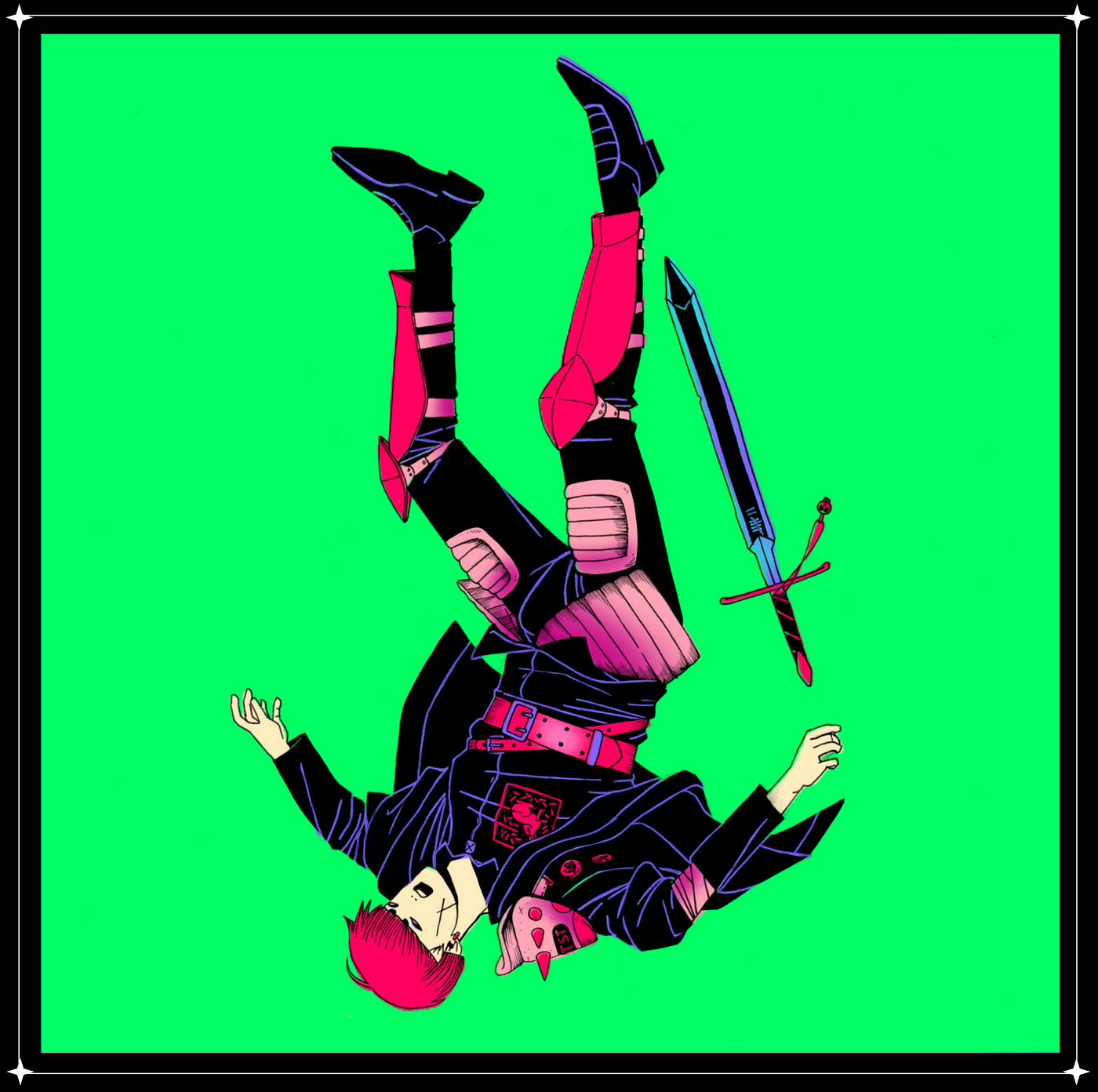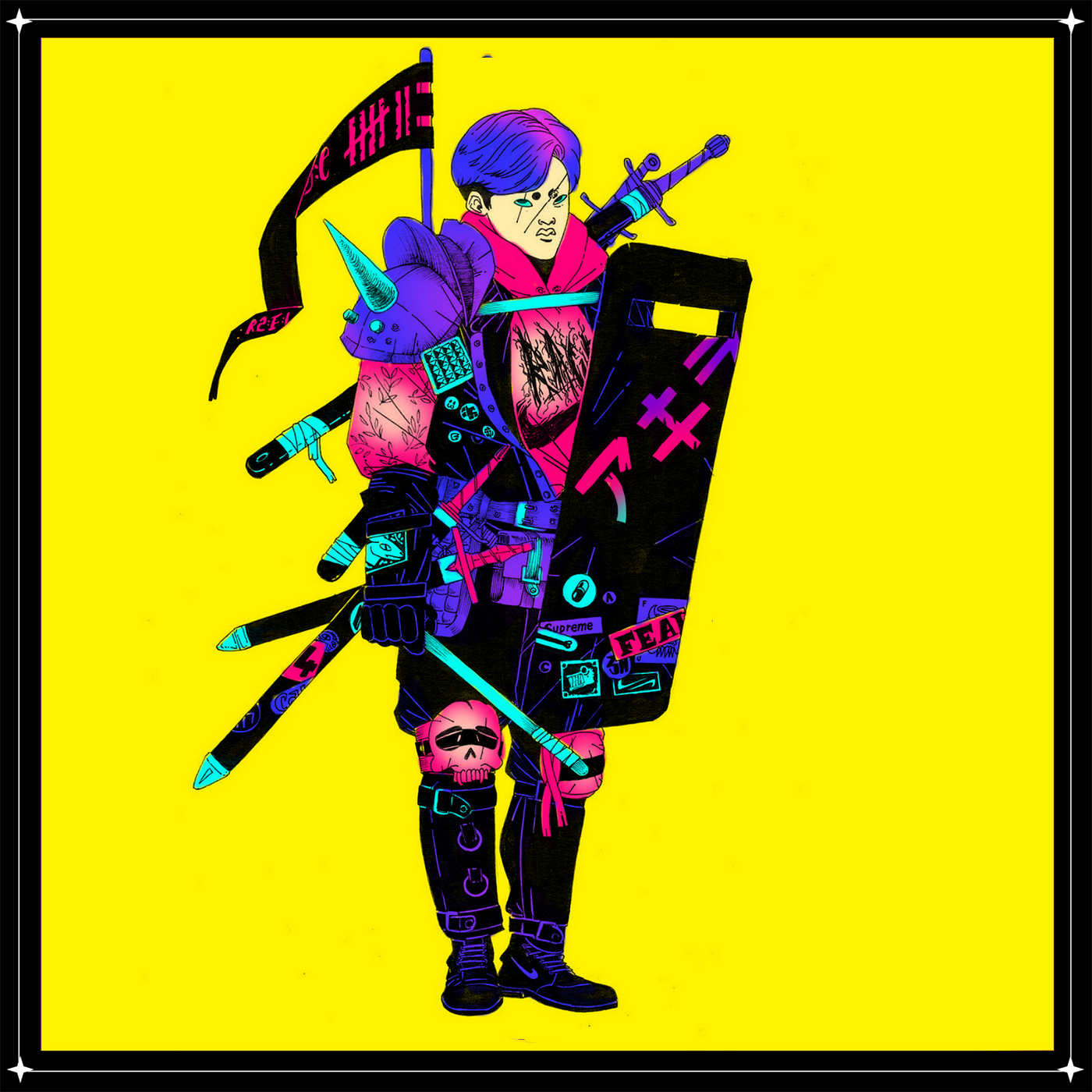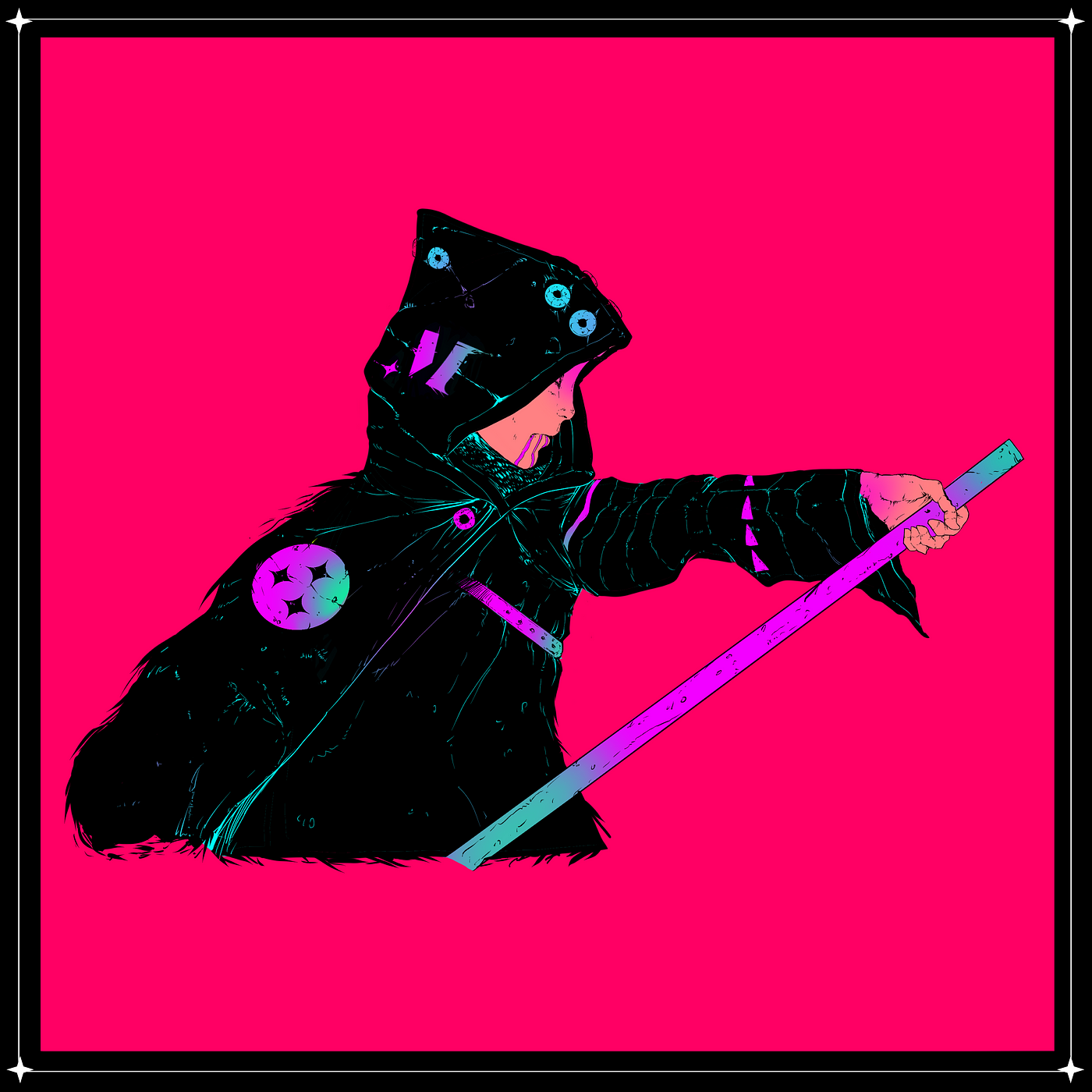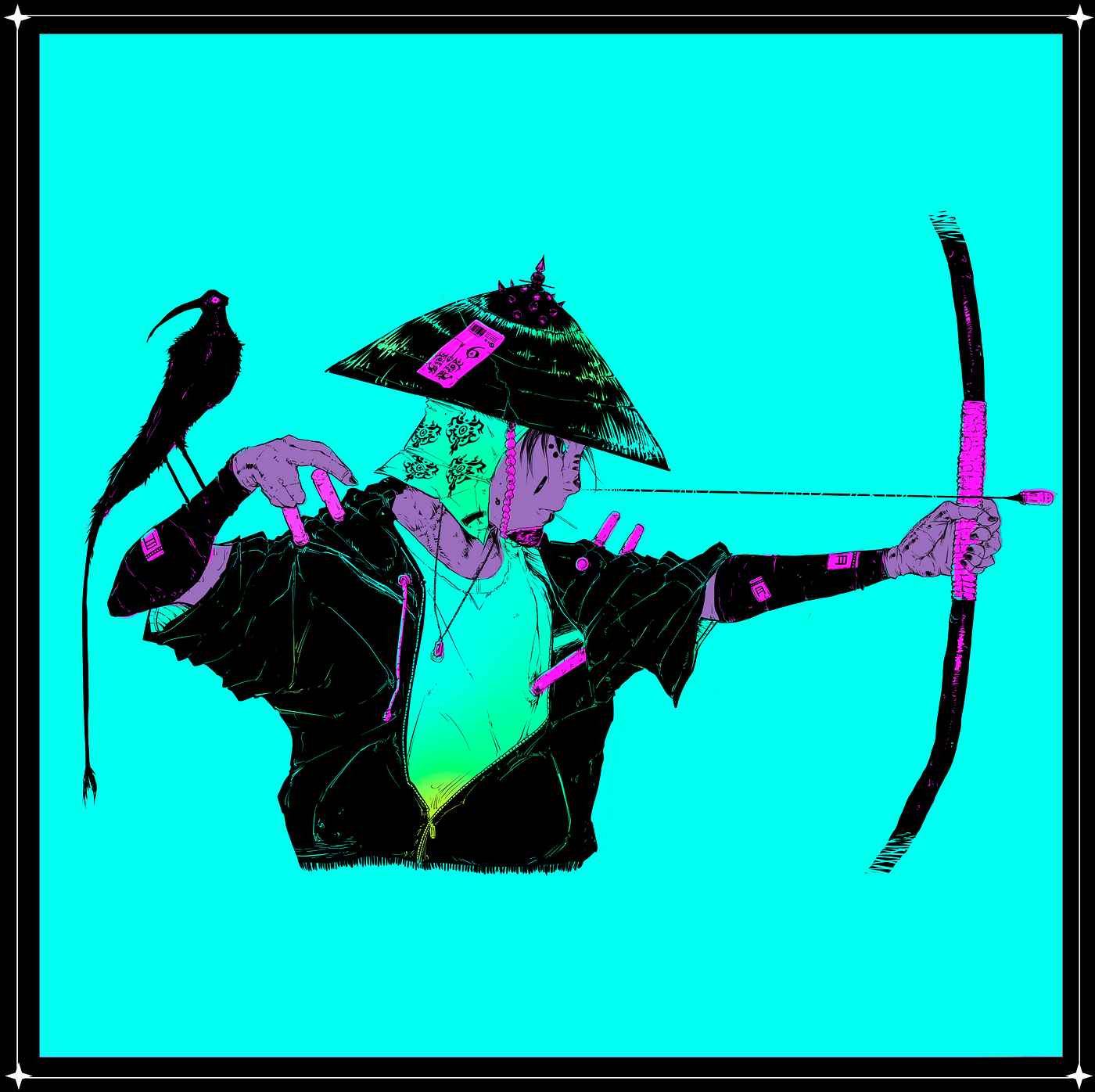
With the MAGIC DAO set to launch, the Treasure team’s ability to control the direction of the project will wane. Decentralization will serve two purposes. First, it creates the conditions by which a true metaverse can develop, free of proprietary distortion.
We have fought hard to maintain the fair launch nature of the project, to date eschewing outside funding and instead self-financing the project. We genuinely believe that Treasure will form the cradle for a cross-game, cross-chain metaverse. Having built this as a fair launch project will ensure long-term relevance for the project. The collaborators that we have attracted have been drawn to the project due to its genesis story, and we expect the organic growth of the ecosystem to continue to increase the longer that the project is able to sustain full decentralization.
Moreover, decentralization solves a crucial scaling problem. There is no way the team (no matter the size) can scrape together a collective imagination sufficient to construct the entirety of this metaverse.
Like Loot, Treasure was meant as building blocks for other creators’ narratives. Creating space for their work requires us to step away. We were thoroughly convinced of this fact in a recent community call where community members outlined their ideas for consumable farming (using Treasures to produce new resources). The ideas being offered were more nuanced than the conversations the team had been having. It is clearly time for MAGIC holders to take the helm in developing Proof of Imagination.
Decentralized governance in this context really does constitute a new consensus mechanism. The world materializes* because* of governance’s decision about what exists in the world. The more building blocks stacked on top of this collective vision, the longer the chain of consensus becomes (and the more valuable the chain itself!). “The world is simply that which exists” is the guiding principle for Proof of Imagination. The team is very excited to get out of the way of the community and see how big they can make this world.
Allowing governance to now shape the project, we wanted to offer three parting insights as the founders about how the treasury should be spent and the kinds of game worlds that the DAO should be cultivating. These ideas can be placed into three categories.
Short-Term Objective: Gamifying Liquidity
The hardest part of Proof of Imagination is achieving the critical mass necessary for an invented universe to possess gravity.
Gravity here, like true gravity, tethers the universe and holds it together by the edges. The gravity of a metaverse is simply consensus that it exists. Without this consensus, the world cannot be said to exist, and none of the assets in this world could gain the monetary premium needed for secondary economic structures to develop. (The longer the chain, the sturdier the architecture.)
Treasure struggled significantly to achieve any stable liquidity for the MAGIC token. At one point in the farm, the liquidity in the Uniswap pool dipped to less than 50% of what the team has invested in the project thus far. The project was saved by the quick thinking of a then-community member, now Head of Growth at Treasure and co-founder, Gaarp. He will be acting as the operational head of Treasure going forward.
Other metaverses have clearly struggled with liquidity as well. Most of the liquidity for the Banana token was apparently provided by a few Kongz whales who took the impermanent loss on the chin out of love for the project.
Luckily, Treasure was saved not only by Gaarp’s plan to create supplementary LP rewards (implemented mid-farm) but also the support of a few key whales.
So, MAGIC has now outlived the early peril of extremely low liquidity. The task for the DAO is figuring out how to keep liquidity incentivized long-term. This goal can be accomplished by framing liquidity as one of the core objectives of the game.

We had suggested elsewhere a couple small ways to start building out this narrative. Instead of using MAGIC as the ecosystem’s core token, the project could transition to using LP tokens as the power source. You wouldn’t even need to call it an LP token. Ideally, the user wouldn’t even know that they’re using a LP token because it’s called a crystal or a chalice or some other item related to the metaverse.
The LP token could also function as the key to unlocking new adventures or NFTs. Developing this concept would solve the impermanent loss problem. Impermanent loss can be reduced to the idea that financial yield does not compensate for the losses incurred by LPing (either real losses or opportunity costs). But the yield in game worlds we are talking about is qualitative — joy! The value of a great gaming experience goes beyond money. It unlocks joy through experiencing, collecting, collective brainstorming, collective experiencing, and so on… Outcomes that DeFi would never in a million years achieve without NFTs.
Framing liquidity as the game’s core objective would take the form of metaphor. Three such metaphors come to mind: liquidity as weather, liquidity as time, and liquidity as a measure of spatial reach.
Before diving into each metaphor, we wanted to briefly address a critique that a great number of people have made about MAGIC: “ETH is a metaverse currency, just use ETH.”
ETH is the meta-metaverse currency. It will maintain this status forever, and MAGIC was never meant to diminish this status or compete with ETH.
However, if ETH was the currency to create gaming metaverses, then it would’ve created game metaverses. (The world is simply that which exists.)
This is the lesson of Loot. If something is the right building block, you’ll see new blocks built on top of it.
Ethereum is the right building block. ETH is not the right currency building block. If it was, Axie wouldn’t have bootstrapped with SLP. DeFi Kingdom wouldn’t have used Jewel. Kongz wouldn’t have used Banana. You can’t chalk up all of these coins up to greed by individual developers. Clearly, hyper-coinization served a purpose in the metaverse (it allowed it to manifest!), and we certainly noticed this in the context of Treasure as the MAGIC farm resulted in more users and builders participating in our ecosystem.
In the case of Treasure, ETH could not replace MAGIC because we are not using MAGIC to bootstrap the ecosystem. We used the dynamic *between Treasure and MAGIC *to bootstrap the ecosystem.
The crux of the Treasure metaverse is the equilibrium between two resources — not the sturdiness of one alone. In fact, treasures and MAGIC were deliberately designed not to be able to operate without the other. The equilibrium, and the tension inherent in needing to continue this dance, is the game theory backing for our Proof of Imagination. ETH’s security as an asset was counter-productive to creating this design, which helped bootstrap the metaverse by establishing a core struggle faced by characters in the Treasure world.
Metaverses are places where stories can be told. There has never been a story worth reading or a game worth playing that didn’t have conflict.
Treasure developers have no control over ETH emissions. There was no way to achieve a nimble, reflexive interaction between treasures and ETH, so we opted to instead invent a new asset class.
This explanation is not persuasive to everyone, although I do find it funny to hear it made by “ETH maxis turned OHM maxis” given the same critique can be made of OHM, especially now that OHM has emerged as a real competitor to ETH as the base pair in AMMs.
OHM (and LUNA) perfected the equilibrium-as-core-mechanism model, which we’ve attempted to model.
Now, returning to the metaphors of liquidity…
Liquidity as Weather
We have not prescribed a single genesis story for the Legions to create room for other storytellers.
One such story could be that Legions are settlers on a new world, which is full of peril and imbalance that they must learn to manage (like any civilization).
Low liquidity is akin to extremely bad weather. Volatile, cruel, literally an existential threat to the protocol (or civilization). LPing a shitcoin is like riding a tiny boat through a huge storm, knowing at any moment your boat could flip and drown you.
Growth in liquidity could thematically correspond with stronger structures to protect the Legions against the natural world. Or, an even more fantastical version of this idea would be that as liquidity grows, the Legions are increasing their power to control the weather and use it for their advantage.
These kinds of narratives would work best if combined with the LP-token-as-a-resource which lets the whole idea of “liquidity provision” be abstracted away. Users don’t even know they’re buying LP tokens. It appears to be some kind of NFT, like everything else in their Treasure wallet.

Liquidity as Time
Growth in liquidity could result in time shifts in the metaverse. New time periods would unlock whenever liquidity reached a certain depth.
You could even design a world where time has frozen, and the solution is for the game players to collectively grow liquidity to re-start time. (The MAGIC-Treasure design is rooted in a similar idea. Productivity of Treasures, and output from the mine, is kickstarted by MAGIC staking.)
As an aside, one of the first tasks of the DAO should be to informally decide how much influence the team should have in shaping Treasure’s ongoing narratives.
One perspective would be that the team isn’t obstructing other builders when we create a product or game experience with a very specific narrative. It would be quite interesting to see various interpretations of the genesis of MAGIC, treasures, and Legions.
Take, for example, the following story design: the Legions have awakened with no knowledge of their origins. The MAGIC that exists in this world seems to be the relic of an ancient race, but extant civilizations can’t discern what the motives of this people were.
Did they invent MAGIC to remedy natural evil, or was MAGIC actually the evil that thrust the world into chaos?
In this version of the story, the world still revolves around MAGIC and treasures. Maybe the inhabitants of this world have divided into factions (those who are against the ancients and those who deify them), while there is an undercurrent of uneasiness in the general population about basing one’s entire culture on relics that no one seems to understand…
Ambiguity can allow for its own kind of story-telling.
Spatial Representations of Liquidity
Extending on the idea of LP tokens as keys to unlock adventures, liquidity could also be the key to unlocking new realms. As liquidity grows, the world expands outward. This design would create a very fun collective gaming experience and more importantly, begin to heal the extremely damaging mentality borne out of DeFi that LPing is a PVP sport.
We should think of providing liquidity as a means to improve the world and explore its limits. This attitude seems much healthier than what DeFi 1.0 manifested.
Another way to minimize the PVP feeling of LP would be to require players to have provided liquidity to join the other players in settling in the new world.
How does one balance the need for a quadratic design (so that whales can’t own all of the new world) while preventing people from free riding and only contributing the minimal amount necessary to join other settlers? We solved this issue in the initial farm through centralization — specifically, being very opaque about the criteria — but this solution would not be possible in decentralized governance.
We honestly have no idea how to design the mechanism described above, but we are extremely optimistic that the community with its wealth of creativity will be able to figure out something.
Medium-Term Objective: MAGIC as a Natural Resource
Initially, we were resistant to turning MAGIC into a governance token as it seemed to be a lazy regurgitation of failed DeFi experiments — namely, one-token one-vote governance. This model of governance didn’t foster decentralization in DeFi summer. It resulted in plutocracy and a lot of community frustration when “the 99%” realized how little influence they had over the direction of the protocol.
NFT-DeFi is the opportunity to revisit these failures and wipe the slate clean. Why port over bad designs when we have the chance to build something new, in an imagined world that carries none of the baggage of TradFi *or *DeFi?
Here is the vision for MAGIC governance that we think the DAO should pursue: MAGIC exists as a naturally emitted resource. Governance aims to manage its harvesting, not its emission. Think of MAGIC as something like oil. Governments obviously do not legislate its existence. Their primary purpose (and that of industry) as it relates to oil is to manage its collection and distribution.
There are several practical problems here. Beyond just capping the supply, you would have to somehow create a contract that distributes the supply to the mines, which then slowly drip out their outputs until the end of time with no further direction.
This design just isn’t feasible. There’s no way to hide a mine in this universe in the way oil and ball clay and other resources lay dormant as undiscovered deposits until some lucky explorer finds the way to them.

It would be quite nice to see a game create increasingly perilous routes to new mines (again using some sort of whale-killer mechanism that neutralizes the inherent unfairness of real-world resource mining). Invention of those obstacles would require an unfathomable amount of planning… unless some clever programmer figured out how to randomly create mines, distribute MAGIC to the mines randomly, then also randomly generate barriers to these mines (like rock, proximity, and depth of the deposit). We think this is possible, but far beyond our abilities.
In Treasure, the role of smart contract developers can completely invert compared to the status quo. Today’s developers use smart contracts to tame the chaos of the existing world. Treasure builders could instead use smart contracts to create chaotic worlds that require taming. The game would be to restore harmony to the imperfect world that the developer deviously birthed, with imperfections taking the form of weather, time distortions, and so on.
The exciting part about this design is that we might discover the mechanisms needed to solve problems for which DeFi offered no solutions. Imagine a world built by developers that mimics the cruelty of our own world. Some environments are resource-rich, while others are starved of resources. Blight, tornado, and other natural disasters compound this injustice.
What good would this serve? Well, players would probably figure out how to make an insurance protocol that actually works! DeFi 1.0, steeped in a weirdly perverse worship of deception and sociopathic behavior, wasn’t exactly fertile ground for these kinds of experiments.
The insurance industry, done correctly, is an inherently humanitarian industry. It is a collective exercise in overcoming the principal cruelty of the natural world — unequal distribution of tragedy. We believe that game designers might be the first group in crypto to crack the nut of decentralized insurance.
At the end of the day, trustlessness is a bad framework for thinking about crypto. Treasure should lean into narratives that are trust-deepening and pro-social. We want game worlds to be not only experiences of joy, but also genuine attempts at making better, fairer systems that require community and coordination to assemble.
So, in short, MAGIC should become a natural resource that is unfairly and unpredictably distributed around the Treasure metaverse. The MAGIC DAO should attempt the paradoxical: using governance to slowly disempower the DAO and make it less and less able to hold any sway over the natural world. The ideal outcome is that MAGIC ceases to be a governance token. Governance tokens don’t even exist! Instead, avatar NFTs function as governance tokens.
They indicate the tribe to which the speaker belongs. Each tribe lobbies the DAO (whose actual power has waned significantly) to enact policies that they support. The NFT is the governance token.
In a nutshell: DeFi governance was about ramping up decentralization and strengthening governance’s control over the protocol. NFT-DeFi might be about introducing game elements that makes governance progressively more difficult. Opposite approach, but it could yield better solutions to the original set of problems.
Representative democracies are probably inevitable in game worlds. Take, for example, the group-mode for realm conquest. This mechanism results in the natural fragmentation of users into groups. Users break off to work in little groups to build settlements with implicit insider/outsider boundaries. Some sort of political system for that tribe is inevitable.
NFTs as governance tokens are probably also inevitable. Given that the basic conditions for political formation (group identity, shibboleths, etc.) are integral to crypto culture, we might as well embrace it.
We think a council comprised of NFT-community tribes, each choosing how to represent themselves before the council, would be an extremely fun experiment for NFTs — and could easily become the new norm for intra-DeFi governance.
Long-term: Cross-Chain Treasures
The move to Arbitrum is in no way short-term or medium-term. Hopefully Treasure becomes a staple of Arbitrum for the foreseeable future.
But the most ambitious vision for this project should see Arbitrum as a pit stop on the larger journey.
Treasure should consider one day creating its own app-specific chain with the Cosmos SDK, with Legions and Treasures acting as validator bonds. The majority of MAGIC liquidity would then reside off-world, on an AMM-specific chain connected to the Treasure chain through IBC.
Here is the metaphor for how this would work: Legions are an interstellar civilization in search of the kindest possible environment for their life-form. Their civilization bounces between planets every few generations, moving onto an even-greener world when it presents itself, each time becoming better at the onboarding process so settlement is smooth and painless.
After a few terraforming attempts, they discovered ways to power satellite civilizations with a remote planet, on which no life lives. The only thing on this planet is the power source, which is routinely carted off-world by driverless barges.
Because of this, things move easily between worlds, but no world is over-crowded nor are specific worlds forced to live under universal rule. Moreover, the power-planet exists safely as a separate part of the universe, free from political turmoil on the colonized planets.
It would be amazing to see games build their own chains. If NFTs function as better proxies for governance than most tokens, then in the case of game worlds, it is even more true.
Why couldn’t NFTs play some role in staking as well?
NFT mechanism design is evolving at a rate faster than anyone could have imagined. See Paradigm’s mind-melting work on RICKs, floor perps, etc. to see why we might already have enough mechanisms to cobble together a highly innovative blueprint for NFT-specific chains…
Treasure should lean into the interstellar vision. If Ethereum (L1 or existing L2’s) was sufficient, Axie wouldn’t have built Ronin.
The same could easily be said of Treasure one day, if the project finds the traction that we think it can.